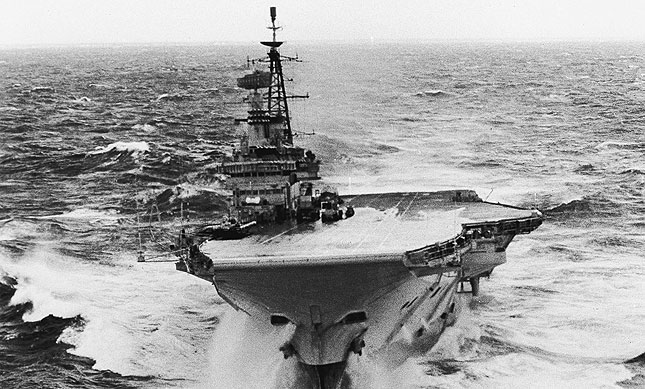A visit to the Imperial War Museum North in Manchester provoked thoughts on the peculiar cruelty and mercy of war, particularly in relation to a warship blown apart at the Battle of Jutland just over a century ago.
When soldiers fall in battle there is often, though not always, some spot in a foreign field that will forever be a place of pilgrimage for their descendants to go and commemorate their loss.
At sea, those killed in action are often lost with no sign of their passing. The wreckage of their vessels soon disappears below the waves. Smoke and blood lingers for mere moments before dissolving on the surface of the sea or being diluted to nothing. The fact that there will never be any fixed grave for the loved ones of those killed in sea combat makes the loss all the harder and more devastating.
Such was the case for the battle-cruiser HMS Indefatigable, last in the fighting line among David Beatty’s hard-charging battle-cruisers at the Battle of Jutland on May 31, 1916. Hammered by German shells, Indefatigable rolled over and blew up. Not long afterwards the battle-cruiser HMS Queen Mary was also sunk with huge loss of life.
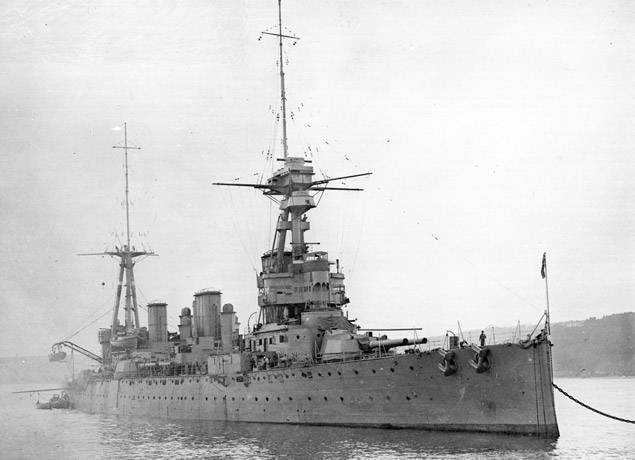
The Devonport-built and manned battle-cruiser HMS Indefatigable, which was blown apart at the Battle of Jutland, 31 May 1916. Photo: Strathdee Collection.
An officer in the super dreadnought battleship HMS Warspite – steaming fast with the rest of her heavyweight squadron to provide the battle-cruisers with support – later remarked: ‘I suddenly saw our battle cruisers coming close by about four cables in the opposite direction and I realised they had turned back. I saw Queen Mary and Indefatigable were adrift but never for a moment realised they had gone.’
Like Indefatigable, the Warspite was both a Devonport-built and manned ship. While the latter survived the battle to fight another day, the destruction of Indefatigable and the obsolete cruiser Defence (also manned by men of the Devonport division) delivered a devastating blow to hundreds of families in the city of Plymouth (which to this day plays host to Devonport dockyard and naval base).
In the aftermath of Jutland worried relatives gathered at the dockyard, outside the office of Commander-in-Chief Plymouth and at the Western Morning News Building in the city centre. Reports based on an official Admiralty communique were placed in the windows of the newspaper offices: 1,017 men had been killed in Indefatigable with a further 900 lost in Defence.
On seeing the names of destroyed ships confirmed in black and white, wives and mothers broke down and had to be escorted away by friends and relatives. A few sad souls remained late into the night, lingering outside the newspaper offices hoping for further news that might hold out some hope a loved one had survived after all.
The names of Devonport-based sailors killed in the two world wars of the 20th Century are recorded at the Naval Memorial that dominates Plymouth Hoe. In its shadow are information plaques on selected ships lost and how they met their fates, not least Indefatigable and Defence. The Imperial War Museum North, in Trafford, Manchester also has a moving reminder of the loss of Indefatigable. There is even a remnant of the ship herself.

A grizzled Royal Navy sailor as carved in stone on the Naval Memorial, Plymouth Hoe.
Photo: Iain Ballantyne.
A tour of the capacious, softly lit interior of the Main Exhibition Space in IWM North brings you face-to-face with the disaster as revealed in a simple, but powerful wall display. In addition to horrifying photographs of the ship exploding, it presents a lifebelt emblazoned with the ship’s name. Notes reveal that it was retrieved from the sea by a British warship searching desperately for survivors. A Jutland veteran donated the lifebelt to the IWM in the 1930s.
What really rams home message of war’s cruelty is the notion that the lifebelt not only weathered a cataclysm that ripped apart steel and the mere flesh of her men, but also that it failed to serve its function. It is more than likely nobody was able to use the lifebelt while they awaited rescue.
One of the only two survivors from Indefatigable does, however, get to tell us his tale, via a quote extract that is included in the display. Interviewed by the IWM in 1964, as part of efforts to ensure veterans’ accounts are preserved for all time, Signaller C. Farmer recounted how he clung for dear life to a piece of wood.
As night clashes between the Grand Fleet and the German High Sea Fleet raged around him, he prayed for salvation. By 3.00 a.m. on the morning of June 1, Farmer was giving up hope of being saved. In a transcript of the IWM sound archive recording he recounts: ‘all of a sudden I could hear something coming towards me and I had to gaze up. It was a German destroyer. Two sailors got down, picked me up and dragged me aboard…’
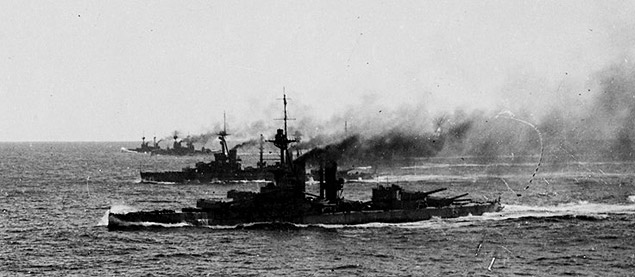
The very symbol of British maritime power a century ago: The battleships of the Grand Fleet steaming in line abreast formation in the North Sea, 1915. Photo: U.S. Naval History and Heritage Command.
While Farmer was in the hands of the enemy, he was at least luckier than the 6,097 sailors and marines of the Royal Navy killed at Jutland. Despite that loss it was ultimately considered a strategic victory for the British, as the Kaiser’s fleet rarely poked its nose out of its bases from then on and mutinied before surrendering in 1918.
Showing the human face of war and terrible loss is the core rationale of the IWM North, which also numbers among its exhibits a heartbreaking exchange of letters between the parents of a child evacuated to Canada and the Children’s Overseas Reception Board, the organisation running the process.
The letters crossed in the post. Even as her parents’ asked if she had reached Canada safely, nine-year-old Beryl Myatt had already lost her life. The evacuation ship SS City of Benares was torpedoed on September 18, 1940 by U-48, with 83 children killed among the 260 who lost their lives. A subsequent request for a wreath to be dropped on the spot where Beryl died was requested by her mum and dad, but was refused by the Admiralty due to the risk from U-boats.
In addition to such letters, the same display at IWM North tells us that Marion Evans, also being sent to Canada, survived the sinking of SS Volendam. Remarkably, though hit by two torpedoes, the Dutch evacuation liner did not sink. The vessel was taken in tow after suffering only a single death. The bitter twist in the tale is that Volendam’s near sinking was in August 1940 and some of the children who survived that attack were later put aboard the City of Benares and lost their lives to U-48’s attack.
While the large central void of IWM North is used very effectively for performances that bring to life aspects of war at home and on the front line, it is also filled with larger artifacts. These illustrate the technology of warfare and also convey the results of conflict, not least a US Marine Corps Harrier and jagged fragments of the Twin Towers destroyed by Al-Qaeda attack.
In one of the displays along the walls of the Main Exhibition Space there is even J.R.R. Tolkein’s revolver. The ‘Lord of the Rings’ and ‘The Hobbit’ author saw action on the Somme during the summer of 1916, but, after contracting trench fever, was rendered unfit for further service. Anyone who has read his novels or seen the movies based on them can be in no doubt that, as he lay in hospital during WW1 – and for many years thereafter – Tolkein brooded on the many faceted nature of war and men, its mass cruelty and moments of kindness.
Among these could be included the Germans who blew apart the British battle-cruiser Indefatigable one moment and held out the hand of mercy to save one of her sailors the next. Then there was the lottery of being evacuated to Canada for safety’s sake and straying into the path of a prowling U-boat. Such are the thoughts stirred up by a visit to the IWM North.

The striking exterior of the Imperial War Museum North, Manchester. Photo: Iain Ballantyne.
This is an edited version of an article that appeared in the August edition of WARSHIPS IFR magazine and also the Western Morning News
Iain Ballantyne recounts the loss of the battle-cruisers and other moments during the Battle of Jutland in his book ‘Warspite’ (Pen & Sword, £14.99, paperback).
The fate of the City of Benares and the toll of Allied shipping taken by U-48 will be touched upon in the forthcoming book ‘The Deadly Trade: A History of Submarine Warfare’, which Iain is currently labouring over.
IWM North is located at The Quays, Trafford Wharf Road, Manchester, M17 1TZ. Admission is free and it is open daily from 10.00am to 5.00pm, except for December 24 – 26. Further details here.
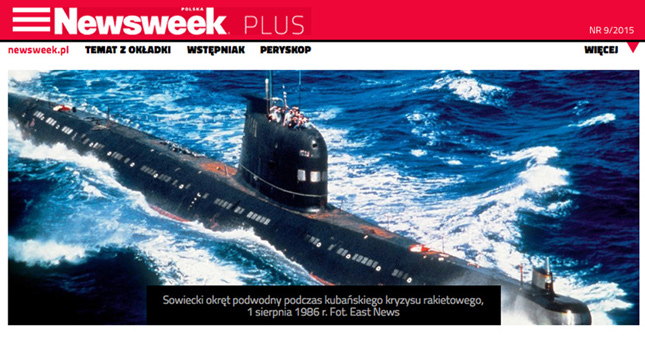
 However, the star turn for raising awareness of ‘Underwater Hunters’ has to be Piotr Wloczyk who interviewed me for an expansive Q&A interview on topics related to the Cold War under the sea. This was published in ‘Historia do Rzeczy’ – a serious major military history magazine, of 100 pages, aimed at the national market – whose production values are exceedingly high.
However, the star turn for raising awareness of ‘Underwater Hunters’ has to be Piotr Wloczyk who interviewed me for an expansive Q&A interview on topics related to the Cold War under the sea. This was published in ‘Historia do Rzeczy’ – a serious major military history magazine, of 100 pages, aimed at the national market – whose production values are exceedingly high.
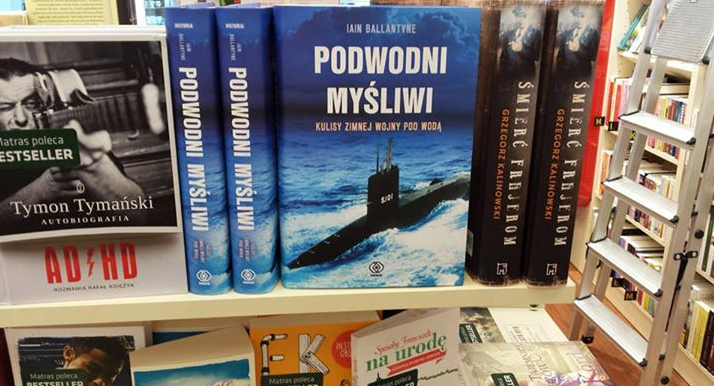 ‘Underwater Hunters’ on sale in Lublin
‘Underwater Hunters’ on sale in Lublin